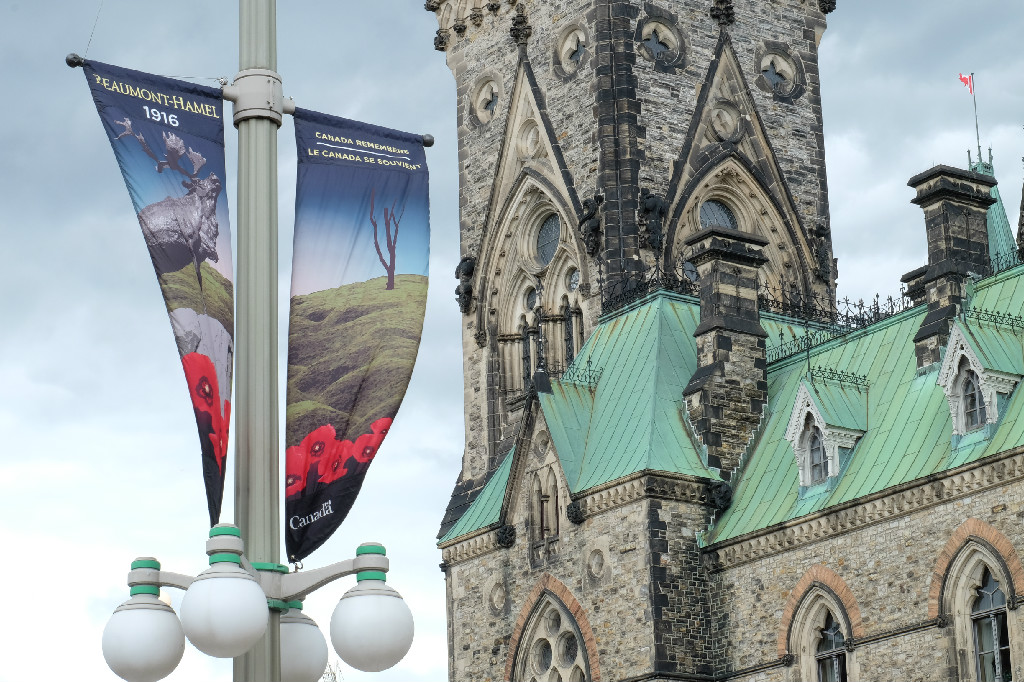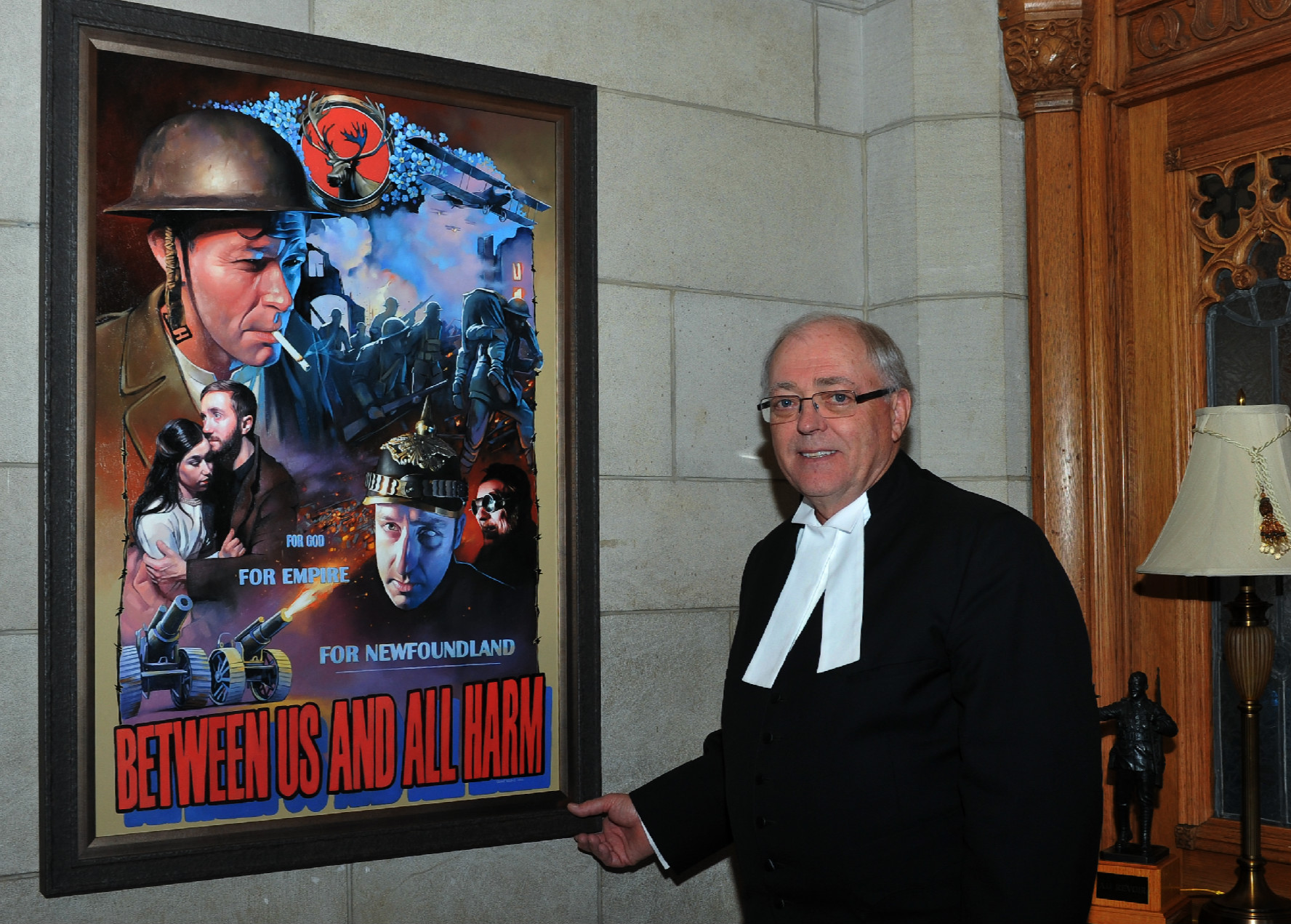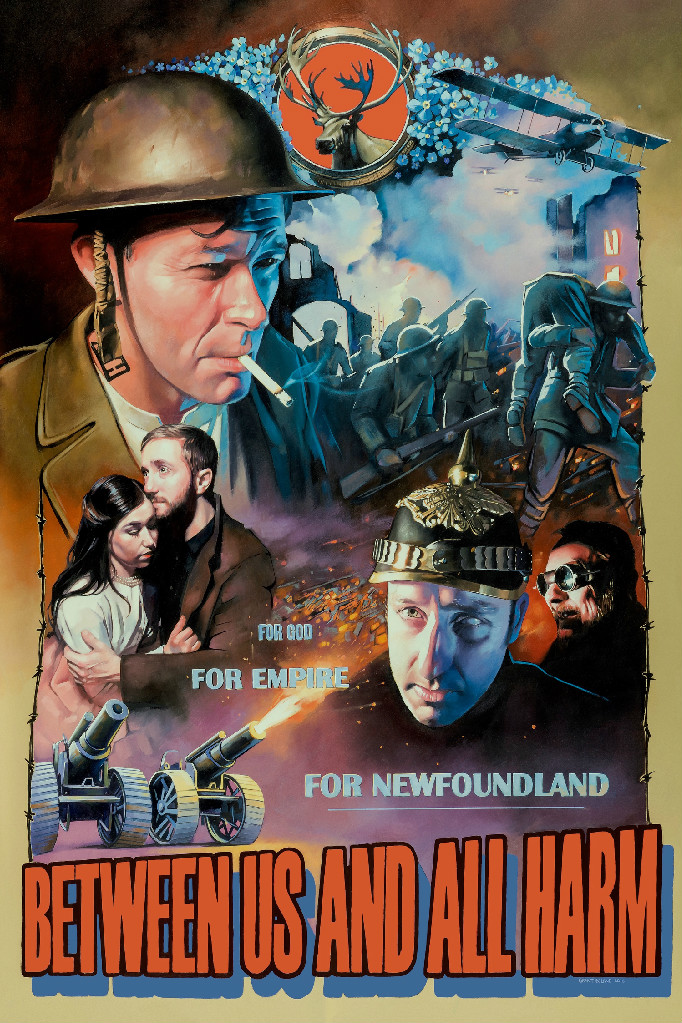A century of mourning: Honouring the Newfoundland Regiment

Every year on July 1 the country bands together to celebrate Canada Day.
But amid the revelry and the fireworks, one province weeps for its dead — for a lost generation of young men felled in one of the bloodiest battles of the First World War.
July 1 is Memorial Day for the people of Newfoundland and Labrador. It is the day Canada’s youngest province remembers the decimation of the Newfoundland Regiment during the Battle of the Somme in 1916.
In the same fields of northeastern France where Romans once fought off Attila the Hun, the Allies made plans to break through the German trench lines with a so-called “big push.”
On July 1, 1916, near the town of Beaumont-Hamel, 801 Newfoundlanders were sent charging into No Man’s Land.
It was a slaughter.
Only 68 men answered roll call the next day and July 1 became a day of mourning for a community brought closer by the shared agony of loss.
“Without a doubt, it changed the course of history for Newfoundland and Labrador,” Newfoundland Senator Fabian Manning said.
“It is the incredible sacrifices of the men of the 1st Regiment at Beaumont-Hamel that, to this day, so strongly resonate in Newfoundland and Labrador.”
Today, a memorial statue of a proud caribou stands at Beaumont-Hamel — a monument to Newfoundland, and a thank you to the brave young men who traded home and safety for a muddy trench, never to return.
The Newfoundland Regiment, or the “Blue Puttees” as they were known due to their blue leggings, defined a moment that to this day ties together the unique fabric of Newfoundland.

To honour the 100th anniversary of the Battle of Beaumont-Hamel, Newfoundlander and Senate Speaker George Furey has hung in the Senate a commemorative piece of art by Newfoundland artist Grant Boland.
The void left by the sacrifice of that generation of young men has long been felt in Newfoundland and Labrador, and it continues to live on in our memories today. Their story of extraordinary devotion and courage will – and always must – be shared.
The Memorial at Beaumont-Hamel in France embodies this: it is a true testament to the spirit of the sacrifices that were made on that fateful day 100 years ago. The noble bronze caribou, emblem of the Newfoundland Regiment, with his head defiantly facing the battlefield, serves as a reminder of their courage and resilience. With the names of those lost inscribed on three bronze tablets at its base reads the epitaph by John Oxenham:
And with bowed head and heart abased
Strive hard to grasp the future gain in this sore loss.
For not one foot of this dank sod
But drank its surfeit of the blood of gallant men
Who for the Faith, their Hope, for Life and Liberty
Here made the sacrifice
Here gave their lives, and right willingly for you and me.


Grant Boland, Newfoundland artist who painted commemorative piece
"I was having a whisky with a friend in downtown St. John’s one warm evening on the first of July. We were drinking to the fallen Newfoundlanders on the one day set aside for remembering them. In contrast to our solemn mood, red and white clad throngs paraded by, revelling in national pride - most just revelling. I was annoyed by their seeming indifference to the historical significance and sacredness of this day for Newfoundland. I began asking random people on the street what July 1st meant to them. Without fail, the response was the same: "Canada Day!” Not one mention of our Newfoundland Memorial Day. I can still feel the sting of it.
Is our history meant to be left sleeping, until some of us just stumble across it? Newfoundland history seems to be just a modest afterthought in our school curriculum. I thought, what if I took areas of our culture and history, and viewed them through an American lens: the Hollywood movie, in the dying art form of hand painted movie posters from the mid-century heyday? Maybe that mirror would reveal something different about us in its reflection."
Check out the poster:

Grant Boland will continue with the Talking Pictures series of movie posters based on Newfoundland history.
Also, learn more about Beaumont-Hamel and the 100th Anniversary at Veterans Affairs Canada.
Related articles
Tags
Committee news
A century of mourning: Honouring the Newfoundland Regiment

Every year on July 1 the country bands together to celebrate Canada Day.
But amid the revelry and the fireworks, one province weeps for its dead — for a lost generation of young men felled in one of the bloodiest battles of the First World War.
July 1 is Memorial Day for the people of Newfoundland and Labrador. It is the day Canada’s youngest province remembers the decimation of the Newfoundland Regiment during the Battle of the Somme in 1916.
In the same fields of northeastern France where Romans once fought off Attila the Hun, the Allies made plans to break through the German trench lines with a so-called “big push.”
On July 1, 1916, near the town of Beaumont-Hamel, 801 Newfoundlanders were sent charging into No Man’s Land.
It was a slaughter.
Only 68 men answered roll call the next day and July 1 became a day of mourning for a community brought closer by the shared agony of loss.
“Without a doubt, it changed the course of history for Newfoundland and Labrador,” Newfoundland Senator Fabian Manning said.
“It is the incredible sacrifices of the men of the 1st Regiment at Beaumont-Hamel that, to this day, so strongly resonate in Newfoundland and Labrador.”
Today, a memorial statue of a proud caribou stands at Beaumont-Hamel — a monument to Newfoundland, and a thank you to the brave young men who traded home and safety for a muddy trench, never to return.
The Newfoundland Regiment, or the “Blue Puttees” as they were known due to their blue leggings, defined a moment that to this day ties together the unique fabric of Newfoundland.

To honour the 100th anniversary of the Battle of Beaumont-Hamel, Newfoundlander and Senate Speaker George Furey has hung in the Senate a commemorative piece of art by Newfoundland artist Grant Boland.
The void left by the sacrifice of that generation of young men has long been felt in Newfoundland and Labrador, and it continues to live on in our memories today. Their story of extraordinary devotion and courage will – and always must – be shared.
The Memorial at Beaumont-Hamel in France embodies this: it is a true testament to the spirit of the sacrifices that were made on that fateful day 100 years ago. The noble bronze caribou, emblem of the Newfoundland Regiment, with his head defiantly facing the battlefield, serves as a reminder of their courage and resilience. With the names of those lost inscribed on three bronze tablets at its base reads the epitaph by John Oxenham:
And with bowed head and heart abased
Strive hard to grasp the future gain in this sore loss.
For not one foot of this dank sod
But drank its surfeit of the blood of gallant men
Who for the Faith, their Hope, for Life and Liberty
Here made the sacrifice
Here gave their lives, and right willingly for you and me.


Grant Boland, Newfoundland artist who painted commemorative piece
"I was having a whisky with a friend in downtown St. John’s one warm evening on the first of July. We were drinking to the fallen Newfoundlanders on the one day set aside for remembering them. In contrast to our solemn mood, red and white clad throngs paraded by, revelling in national pride - most just revelling. I was annoyed by their seeming indifference to the historical significance and sacredness of this day for Newfoundland. I began asking random people on the street what July 1st meant to them. Without fail, the response was the same: "Canada Day!” Not one mention of our Newfoundland Memorial Day. I can still feel the sting of it.
Is our history meant to be left sleeping, until some of us just stumble across it? Newfoundland history seems to be just a modest afterthought in our school curriculum. I thought, what if I took areas of our culture and history, and viewed them through an American lens: the Hollywood movie, in the dying art form of hand painted movie posters from the mid-century heyday? Maybe that mirror would reveal something different about us in its reflection."
Check out the poster:

Grant Boland will continue with the Talking Pictures series of movie posters based on Newfoundland history.
Also, learn more about Beaumont-Hamel and the 100th Anniversary at Veterans Affairs Canada.


